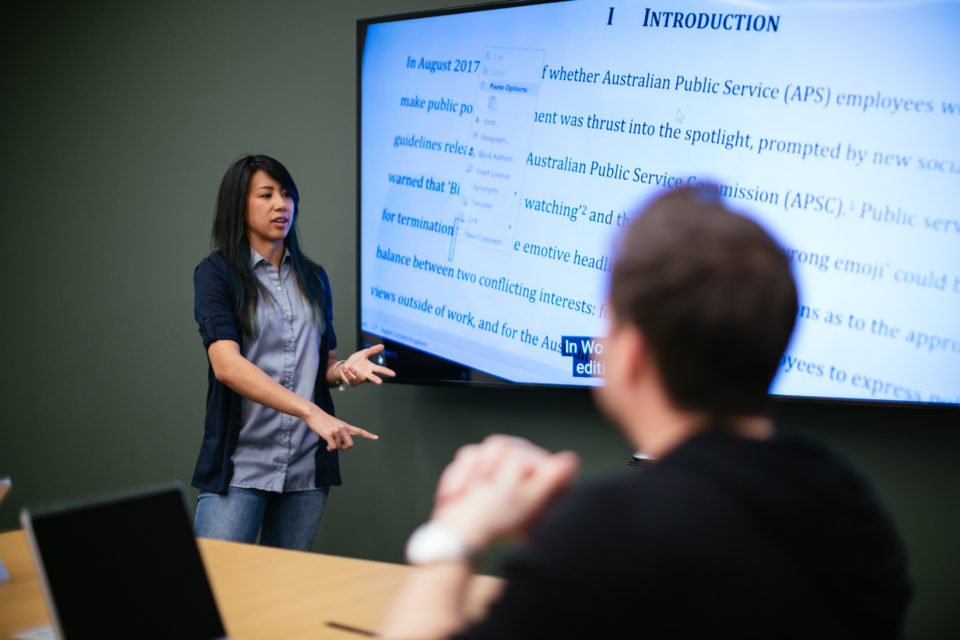 By Hector Minto, Microsoft Accessibility Evangelist
By Hector Minto, Microsoft Accessibility Evangelist
More than 1 billion people worldwide experience some form of disability. Further, every one of us will face some type of exclusion at some point in our lives, whether temporary or permanent.
Technology can play an important role empowering people who have disabilities. It can help people like Lucie, a brilliant engineering student in Toulon, in the South of France who was born with cerebral palsy. Lucie uses eye tracking technology every day to communicate with others and even code!
Today marks the eight Global Accessibility Awareness Day, an international initiative to get people talking, thinking and learning about accessibility. For us, it’s also an opportunity to dig deep into how to make technology more accessible and help people everywhere thrive.
As Microsoft’s Accessibility Tech Evangelist for Europe, I spend most of my time talking to our customers, and our teams who engage with them, about their accessibility needs and the importance of creating an inclusive culture.
A more inclusive approach helps organizations to attract and keep the best talent. In a recent survey that delves into millennials’ perceptions, respondents said they want to work for employers that reflect their values. And diversity and inclusion are on the top of their list. With millennials set to comprise 75 percent of the global workforce by 2025, it’s an insight that cannot be ignored. Moreover, 1 in 2 people care deeply about someone with a disability.
Further, creating and maintaining an inclusive culture isn’t just the right thing to do, it makes sound business sense. A piece of research by Accenture found that companies embracing accessibility initiatives perform better financially – outperforming other companies in revenue, net income and economic profit margins.
At Microsoft, accessibility and inclusion are essential to delivering on our mission to empower every person and every organization on the planet to achieve more. That doesn’t just begin and end with the products we create. For me it’s about the culture of our workplace and to the systemic approach to inclusion in everything we do. Whether it is enhancing our inclusive hiring practices, embedding inclusion into our DNA as a company or supporting our teams to deliver accessible and inclusive experiences for all.
Accessibility should be woven into the fabric of what we design and build. If we don’t deliberately include, we mistakenly exclude. This means making products and services such as the Xbox Adaptive Controller to empower gamers with limited mobility or Seeing AI, an app that narrates the world for people who are blind or have low vision.
Not only is it important that we do this for our customers and our employees, I believe that designing with and for people with disabilities will lead to greater innovations for everyone. That’s why we launched AI for Accessibility last year, which provides opportunities for inventors and researchers to use AI to empower people with disabilities. Today, we announced new AI for Accessibility grantees who are developing accessible solutions to create new opportunities and assist people with disabilities.
Annual milestones like Global Accessibility Awareness Day are a great reminder of the importance of diversity and inclusion. However, creating a more inclusive world, takes diligence every day among employers, public sector leaders and citizens. If I could make one plea to business leaders today, I would like to encourage everyone to check one accessibility tool that they could start using. Together, we can make the world more inclusive.

Did you know Microsoft already hosts many accessible features within Office, Windows, our application ecosystem and beyond?
- Accessibility Insights for Windows helps developers find and fix accessibility issues in Windows apps.
- Work with assistive technologies – Office 365 applications work seamlessly with screen readers and keyboards on most devices. Step-by-step guidance is available per application to help you get started.
- Type what you want to do – Tell Me lets you quickly access commands in several Office 365 applications without navigating the command ribbon. You can use Tell Me to assist with formatting, discover the difficult-to-find capabilities and even get scoped help in Office 365 using everyday language.
- Ensuring content is accessible – MailTip in Outlook informs coworkers when content is accessible. They can run an Accessibility Checker before sending an email and fix any issues that might make the content not accessible for people with disabilities.
- Go paperless with Office Lens – Office Lens helps you transform text on a printed page into digital content that can be read aloud. To empower you to get an image of exactly what you’re trying to capture, Office Lens on iOS can tell you to move back, to the right, or in other directions to get the full page in the frame.
- Present with real-time subtitles – Display autogenerated subtitles on a presentation in more than 60 languages with the Presentation Translator add-in for PowerPoint. Additionally, let each audience member follow along with captions displayed in their chosen language on any device with Microsoft Translator.
- Add captions for videos – Create multimedia presentations that are engaging and accessible with Office 365 applications such as PowerPoint and Sway that enable you to add captions for embedded videos.
- Stay focused while reading – Sustain attention with Learning Tools settings such as Immersive Reader that let you have words read aloud with simultaneous highlighting. You can also reduce focus to a few lines, adjust page colors, and increase spacing between lines, letters, and words.
- Type with your voice – Convert your speech to text with Dictate in applications such as Word, PowerPoint and Outlook.




